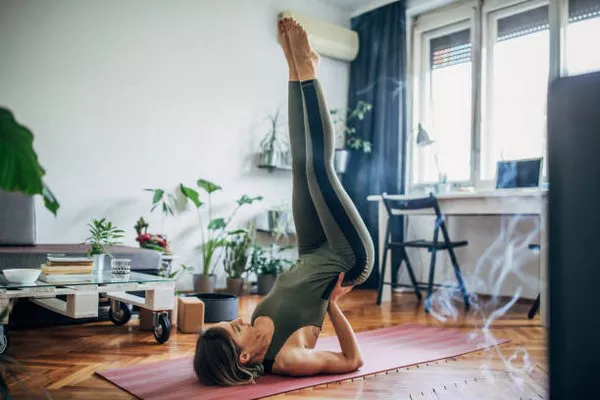Ashtanga Vinyasa Yoga is a dynamic and physically demanding practice that synchronizes breath with movement to produce an internal heat designed to purify the body. It was popularized by K. Pattabhi Jois in the 20th century, and it has become a foundational style for many modern yoga practices. This article delves into the origins, principles, benefits, and structure of Ashtanga Vinyasa Yoga, providing a comprehensive understanding of this powerful practice.
Origins of Ashtanga Vinyasa Yoga
Historical Background
Ashtanga Vinyasa Yoga traces its roots to an ancient manuscript called the “Yoga Korunta,” said to have been discovered by Sri T. Krishnamacharya in the early 20th century. This text outlined a system of physical postures linked by vinyasas (sequences of movements synchronized with breath). Krishnamacharya taught this method to his student, K. Pattabhi Jois, who later developed and popularized Ashtanga Yoga.
Influence of K. Pattabhi Jois
K. Pattabhi Jois established the Ashtanga Yoga Research Institute in Mysore, India, where he taught this method to both local and international students. His teachings emphasized the importance of discipline, dedication, and the therapeutic benefits of a consistent practice.
Principles of Ashtanga Vinyasa Yoga
Tristhana: The Three Key Elements
Ashtanga Vinyasa Yoga is built on three fundamental principles known as Tristhana:
Vinyasa: The breath-synchronized movement, which links each posture to the next.
Bandhas: Internal energy locks that help control the flow of energy within the body.
Drishti: A focused gaze, which helps in developing concentration and mindfulness.
The Eight Limbs of Yoga
The name “Ashtanga” means “eight limbs,” referring to the eight-fold path outlined by Patanjali in the Yoga Sutras. These limbs are:
Yama: Ethical guidelines.
Niyama: Personal observances.
Asana: Physical postures.
Pranayama: Breath control.
Pratyahara: Withdrawal of senses.
Dharana: Concentration.
Dhyana: Meditation.
Samadhi: State of unity.
The Structure of Ashtanga Vinyasa Yoga
The Primary Series
The Primary Series, also known as Yoga Chikitsa (Yoga Therapy), is designed to detoxify and align the body. It consists of a set sequence of postures, including:
Surya Namaskar A and B (Sun Salutations)
Standing Postures
Seated Postures
Finishing Sequence
The Intermediate Series
The Intermediate Series, or Nadi Shodhana (Nerve Cleansing), focuses on purifying the nervous system by opening and clearing energy channels. This series builds upon the strength and flexibility developed in the Primary Series.
The Advanced Series
The Advanced Series, also known as Sthira Bhaga (Strength and Grace), is divided into four parts (A, B, C, D). These sequences are highly challenging and require significant strength, flexibility, and endurance.
Benefits of Ashtanga Vinyasa Yoga
Physical Benefits
Improved Flexibility: Regular practice enhances flexibility in muscles and joints.
Increased Strength: The sequences build muscular strength and endurance.
Enhanced Balance: The practice improves overall body balance and coordination.
Detoxification: Sweating during practice helps eliminate toxins from the body.
Mental and Emotional Benefits
Stress Reduction: The focus on breath and movement helps reduce stress and anxiety.
Mental Clarity: Consistent practice enhances concentration and mental clarity.
Emotional Stability: The discipline and mindfulness fostered by the practice promote emotional balance.
Spiritual Benefits
Inner Peace: The meditative aspects of the practice help cultivate a sense of inner peace.
Self-Awareness: Practitioners develop a deeper understanding of themselves and their connection to the world.
How to Start Practicing Ashtanga Vinyasa Yoga
Finding a Qualified Teacher
Begin by finding a qualified Ashtanga Vinyasa Yoga teacher. Look for someone with experience and a strong understanding of the practice.
Starting with the Primary Series
Beginners should start with the Primary Series, focusing on mastering the foundational postures and breathing techniques.
Consistent Practice
Consistency is key. Aim to practice regularly, ideally six days a week, to experience the full benefits of Ashtanga Yoga.
Modifications and Props
Don’t hesitate to use modifications and props to support your practice. As you build strength and flexibility, you can gradually reduce your reliance on these aids.
See Also: What Poses Are In Vinyasa Yoga
Common Challenges and Solutions
Physical Challenges
Flexibility Issues: If you struggle with flexibility, start with gentle stretches and gradually progress.
Strength Building: Incorporate strength training exercises to build the necessary strength for the postures.
Mental Challenges
Maintaining Focus: Use drishti and mindful breathing to enhance concentration.
Overcoming Frustration: Practice patience and self-compassion. Progress may be slow, but it will come with time.
The Role of Breath in Ashtanga Vinyasa Yoga
Ujjayi Pranayama
The Ujjayi breath, or “victorious breath,” is a key component of Ashtanga Vinyasa Yoga. This breathing technique involves inhaling and exhaling through the nose with a slight constriction of the throat, creating a gentle hissing sound.
Breath and Movement Synchronization
Synchronizing breath with movement creates a flow that enhances the meditative quality of the practice and maximizes the benefits of each posture.
Integrating Ashtanga Vinyasa Yoga into Daily Life
Establishing a Routine
Incorporate your practice into your daily routine. Early morning practice is ideal for many practitioners.
Adapting the Practice
Modify the practice to suit your lifestyle and physical condition. Listen to your body and make adjustments as needed.
Mindful Living
Extend the principles of Ashtanga Yoga into your daily life. Practice mindfulness, ethical behavior, and self-discipline beyond the mat.
Advanced Techniques and Practices
Pranayama
Incorporate advanced pranayama techniques to deepen your breath control and enhance your practice.
Meditation
Add meditation to your routine to cultivate inner peace and mental clarity.
Study and Self-Reflection
Study the philosophical aspects of Ashtanga Yoga and engage in self-reflection to deepen your understanding and practice.
Conclusion
Ashtanga Vinyasa Yoga is a transformative practice that offers numerous physical, mental, and spiritual benefits. By understanding its principles, structure, and techniques, you can embark on a journey of self-discovery and holistic wellness. Whether you’re a beginner or an advanced practitioner, the discipline and dedication required by Ashtanga Yoga can lead to profound personal growth and a deeper connection to yourself and the world around you. Embrace the practice with an open heart and mind, and let it guide you towards a healthier, more balanced life.


